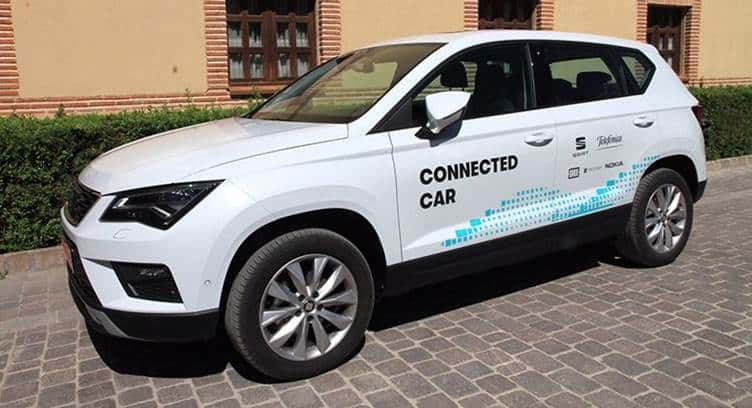Telefónica and SEAT recently showcased connected car use cases in Segovia using existing mobile networks in a real urban setting.
A member of the Volkswagen Group, SEAT exports 80% of its vehicles and is present in over 80 countries on all five continents.
SEAT contributed an Ateca equipped with the latest connectivity technology that was modified to issue alerts to the driver through the instrument panel. The initiative was also carried out in collaboration with FICOSA, which manufactured the C-V2X (Celular V2X) communication device in the car; SICE, the owner of the road infrastructure which collaborated by equipping intersection traffic lights with connectivity, and Nokia, which implemented an MEC (Multi-access Edge Computing) server, serving as the communication platform between the vehicle and the road infrastructure.
More specifically, the two use cases of assisted driving presented in Segovia consisted in:
- The vehicle receiving an alert from a traffic light when a pedestrian is in a crosswalk in a blind right-hand corner. In addition, if the driver signals their intent to turn by activating the right turn signal, the vehicle displays an alert on the instrument panel that there is a pedestrian in the crosswalk.
- The vehicle receiving an alert from a traffic light when it is about to change to red. According to its location, speed and course, the vehicle decides whether it has enough time to cross the intersection. If not, a warning alert is displayed on the instrument panel so the driver can prepare for a controlled stop.
To achieve this, and with the goal of obtaining stable lower latencies, it was essential to implement the MEC server, where the application was embedded that operates as an intermediary between the infrastructure and the vehicle, making a pre 5G use case possible.
Both use cases are based on the standard C-V2X protocol, used for the first time in Spain with this demonstrator, to enable vehicular communication via the existing mobile infrastructure.
Mercedes Fernandez, Manager, Telefonica
Thanks to decreased levels of latency achieved by the improvements introduced in the LTE 4.9 network (pre 5G), we can now offer new cases of assisted driving. As the network develops and latencies diminish, use cases will advance towards cooperative as well as autonomous driving.
Fabian Simmer, Digital Officer, SEAT
The development of these initial cases of interaction between the car and 5G technology enables us to continue to make progress in our goal of offering drivers a more enjoyable and safer experience at the wheel.




















